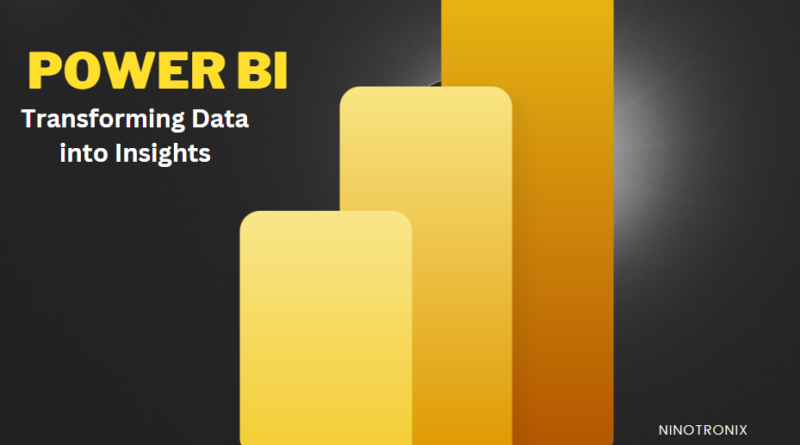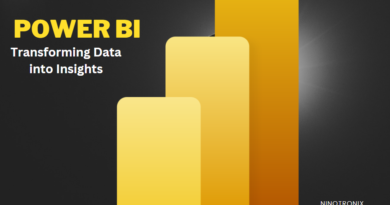Power BI Services: Transforming Data into Insights


Table of Contents
In today’s data-driven world, organizations are continuously gathering massive amounts of data from various sources, ranging from sales transactions and customer interactions to website traffic and social media engagement. Extracting meaningful insights from this data is paramount for informed decision-making and competitive advantage. This is where Power BI services comes into play – a dynamic business intelligence tool developed by Microsoft that empowers users to transform raw data into compelling visualizations and actionable insights.
Understanding Power BI
Power BI is a suite of business analytics tools that allows users to connect to different data sources, transform and shape the data, and create interactive reports and dashboards. It offers a seamless integration of data modeling, data visualization, and data sharing, enabling users to gain valuable insights and make informed decisions quickly.
Key Components
Power BI comprises several key components that work together to deliver its capabilities:
- Power BI Desktop: This is the primary authoring tool where users design reports, create data models, and develop interactive visualizations. It offers a user-friendly interface and features a wide range of data connectors to pull data from various sources.
- Power Query: Power Query is used for data transformation and shaping. It allows users to connect to diverse data sources, combine data from multiple sources, clean and preprocess data, and create a unified dataset for analysis.
- Power Pivot: Power Pivot is a data modeling engine that enables users to build robust data models by defining relationships between tables, creating calculated columns, and writing advanced calculations using the Data Analysis Expressions (DAX) language.
- Power View, Power Map, and Power Q&A: These components enable users to create interactive data visualizations, geographic visualizations, and natural language queries, respectively.
- Power BI Service: This is a cloud-based platform where users publish and share their reports and dashboards. It allows for collaboration, data exploration, and real-time sharing of insights with colleagues.
- Power BI Mobile: The mobile app allows users to access and interact with Power BI content on various devices, ensuring insights are available on the go.
The Power BI Services Workflow
The process of transforming raw data into insightful visualizations follows a structured workflow:
- Data Source Connection: Power BI connects to a wide array of data sources, including databases, spreadsheets, cloud services, and APIs. Users can import or establish a direct connection to the data source.
- Data Transformation: Using Power Query, users clean, filter, and transform the data to prepare it for analysis. This may involve removing duplicates, handling missing values, and aggregating data.
- Data Modeling: Power Pivot enables users to create relationships between different tables in the dataset. It also allows for the creation of calculated columns and measures using the DAX language.
- Report Creation: Power BI Desktop provides a canvas for designing reports. Users drag and drop visuals like charts, tables, and maps onto the canvas, configuring them with relevant fields and formatting options.
- Interactivity and Visualization: Visualizations are enhanced with interactive features such as filtering, slicing, and drill-through actions. Users can explore data dynamically, gaining deeper insights.
- Publishing and Sharing: Completed reports are published to the Power BI Service, where users can share them with others. Reports can be embedded in websites or shared through links, ensuring wide accessibility.
- Collaboration and Iteration: Power BI’s collaborative features enable teams to work together on reports and dashboards, iterating and refining insights based on feedback.
Benefits and Impact:
Power BI brings numerous benefits to organizations and individuals:
- Data-Driven Decision-Making: Power BI empowers users to make decisions based on data-driven insights rather than intuition, leading to more accurate and informed choices.
- Visual Storytelling: The tool enables users to create compelling narratives by visualizing data in an easily digestible format, fostering a better understanding of complex information.
- Efficiency and Productivity: Power BI streamlines the process of data analysis and visualization, reducing manual effort and saving time.
- Real-Time Insights: With real-time data connectivity, users can monitor key metrics and performance indicators in real time, enabling proactive responses to changing conditions.
- Accessibility: Power BI’s cloud-based nature and mobile app ensure that insights are accessible anytime, anywhere, on various devices.
In a world inundated with data, Power BI emerges as a pivotal solution, bridging the gap between raw information and actionable insights. It equips organizations and individuals with the tools needed to unlock the true potential of their data, fostering smarter decisions, enhanced efficiency, and a competitive edge in the dynamic business landscape. As the journey from data to insights becomes increasingly vital, Power BI stands as an essential companion, revolutionizing the way we understand and harness the power of data.
You can read more about new tool like PowerApps ….


